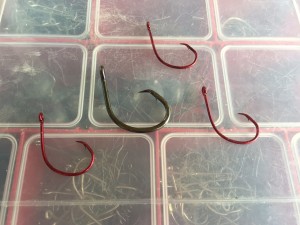Super Easy Ways to Increase Fish Survival Rates
By Debbie Hanson
Oct 04, 2015
With overall U.S. fishing participation numbers up at nearly 46 million people, it’s important that all anglers take the time to learn more about how to increase fish survival rates when releasing a catch.
With overall U.S. fishing participation numbers up at nearly 46 million people, it’s important that all anglers take the time to learn more about how to increase fish survival rates when releasing a catch. Certain fish species may be caught out of season, may not be within the legal regulations, or may be caught just for sport instead of for the dinner table. In these situations, there are a few easy ways you can help increases the chances that your catch will survive to be caught another day.
-
Use circle hooks when fishing with natural baits. Circle hooks are designed so that the tip of the hook is pointed inward towards the shank. Because of this design, the hook generally catches in the corner of the fish’s mouth and is rarely swallowed. Circle hooks play a big part in helping to increase fish survival rates when practicing catch and release fishing.
-
Use conservation-friendly fishing tools, like dehookers and rubber nets, to reduce handling and stress on the fish. There are certain fishing tools that help to cut down on the amount of stress that is put on the fish once it has been hooked. Rubber landing nets without knots are good to use because they help keep the fish’s slime coat intact and reduce the chance of injury. A dehooker is also a helpful fish conservation tool to use because it will allow you to pop the hook out of the fish’s mouth without having to remove the fish from the water.
-
Use wet, bare hands when handling fish. Avoid using anything other than your wet, bare hands if you want to handle your catch. Although it may seem a little slippery at first, it’s important to handle fish this way in order to keep the slime coat on the fish’s body intact. That slime coat helps to protect the fish from disease and infection.
-
If you remove a fish from the water for a photo, try to hold the fish horizontally versus vertically. Large fish, in particular, should not be held in a vertical position by the jaw or gills. Since fish live in horizontal suspension, a vertical hold can do damage to the fish’s organs or dislocate the fish’s spine.
-
Don’t keep the fish out of the water for any longer than you can hold your own breath. After catching a fish, return it to the water as quickly as possible.


Always make sure you have a valid fishing license, and check the fishing regulations for your state before going on a fishing trip. Any fish that’s not within the state regulations must be released. If you apply these conservation guidelines, you’ll be doing your part to help contribute to healthier fisheries by increasing fish survival rates.









